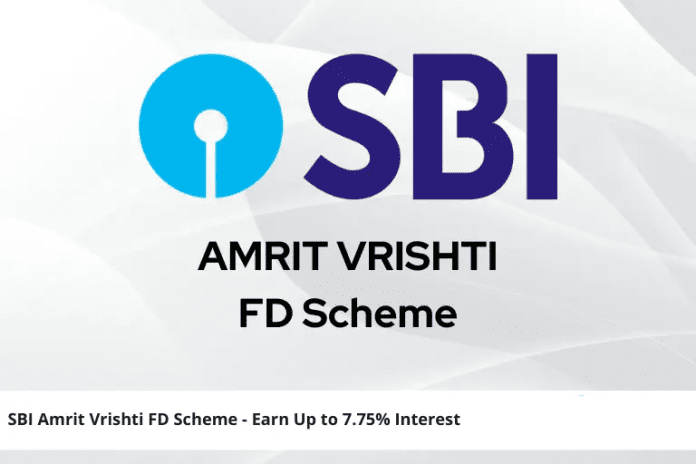SBI Amrit Kalash FD: SBI has discontinued Amrit Kalash FD, now it has brought Amrit Varsha scheme for 444 days, you will get 7.85% interest.
If you are also looking for a better scheme to get a big refund on a short term scheme, then know about SBI’s 444 days Amrit Vrishti Scheme (SBI Amrit Vrishti FD). On this, 7.25% annual interest is being given to general customers, 7.75% to senior citizens and 7.85% annual interest to super senior citizens above 80 years of age.
These banks have reduced interest on FD
HDFC Bank, Yes Bank, Bank of Baroda and Punjab & Sind Bank have already cut FD rates, signalling the beginning of a larger trend.
SBI’s new offer: Amrit Vrishti FD
For investors who missed Amrit Kalash FD, SBI has introduced a new option – Amrit Vrishti FD Scheme. This is a special deposit scheme of 444 days, in which 7.25% annual interest is being given to general customers, 7.75% to senior citizens and 7.85% annual interest to super senior citizens above 80 years of age. These rates are applicable from January 3, 2025.
What is SBI Amrit Vrishti Scheme?
This is a term deposit scheme, whose period is 444 days. That is, the money will be invested in it for 44 days.
General customers will get 7.25% annual interest.
Senior citizens will get the benefit of 7.75% interest rate.
Domestic and NRI customers can avail the benefits of this scheme.
Terms and Conditions of the Scheme
This scheme will be applicable to those fixed deposits whose investment amount is less than ₹ 3 crore.
This rule may also apply to new deposits and renewal of existing deposits.
This will not be applicable on Recurring Deposits, Tax Saving Deposits, Annuity Deposits and Multi-Option Deposits.
Benefits of the scheme
- The minimum investment amount is ₹1,000.
- There is no maximum investment limit.
- Interest will be paid on monthly, quarterly or half-yearly basis.
How to invest?
Customers can invest through SBI branches, YONO SBI and YONO Lite mobile apps or internet banking. This scheme will be automatically implemented when a 444-day period is selected.
Know how much return you will get on an investment of ₹ 1,00,000 to ₹ 5,00,000.
How much return on investment of ₹5,00,000
On an investment of ₹5,00,000, senior citizens will get interest of Rs 48935.21 at the rate of 7.75%, i.e. the maturity amount will be Rs 548935.21. On the other hand, common citizens will get Rs 45,667.69 as interest at the rate of 7.25% and the maturity amount will be Rs 5,45,667.69.
How much return on investment of ₹4,00,000
If we calculate this on an investment of ₹4,00,000, then senior citizens will get Rs 39,148.17 as interest in 444 days. In this way, the maturity amount will be Rs 4,39,148.17. On the other hand, ordinary citizens will get Rs 36,534.15 as interest. In this way, the maturity amount will be Rs 4,36,534.15.
How much return on an investment of ₹3,00,000
On an investment of ₹3,00,000, senior citizens will get Rs 29,361.13 as interest in 444 days. In this way, the maturity amount will be Rs 3,29,361.13. On the other hand, ordinary citizens will get Rs 27,400.62 as interest. In this way, the maturity amount will be Rs 3,27,400.62.
How much return on an investment of ₹2,00,000
On an investment of ₹2,00,000, senior citizens will get Rs 19,574.08 as interest in 444 days. In this way, the maturity amount will be Rs 2,195,74.08. Whereas, the general citizens will get Rs 18,267.08 as interest. In this way, the maturity amount will be Rs 2,18,267.08.
How much return on investment of ₹1,00,000
On investment of ₹1,00,000, senior citizens will get Rs 9,630 as interest in 444 days. In this way, the maturity amount will be Rs 1,09,630. Whereas, the general citizens will get Rs 9,280 as interest. In this way, the maturity amount will be Rs 1,09,280.
Most Read Articles:
- EPFO’s big decision! No cancelled cheque or company’s approval will be required to withdraw PF, money will be received in 2 days
- EPFO New Rule: Big update PF account holders! EPFO issued a new rule regarding UAN generation, check new rule here
- Credit Card Link UPI: Link your credit card to UPI from home, know step-by-step guide


